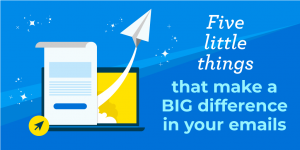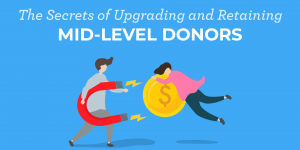Sales literature stands in for you when you’re not around, carrying your brand identity and reputation to the marketplace. Eye-catching design grabs attention, but a provocative headline and compelling text convinces the reader to consider what you have to say. It’s a personal interaction as the prospect holds, feels, and re-reads your message. If you cut corners on printing or circulate out-of-date information, your prospects might subconsciously conclude that you produce cheap, outdated products too.
Tie each printed piece to a goal in your strategic marketing plan. Is the objective to drive new sales, cross-sell to existing customers or communicate better with your stakeholders? The appropriate format will naturally follow—a postcard, a circular, a product data sheet, a package insert, a newsletter. The layout must work not only aesthetically, but also from the perspective of creating a positive perception that is consistent with your company’s image. Combinations of different elements—paper types, colors, repetition—can produce powerful subliminal effects so it is important that you work with a professional designer. Another consideration is portability. An oversized piece might gain attention, but what will make someone pick up your piece and take it with them and then pass it along to others?
Communicate at lightning speed about who you are, what you are offering, what is in it for the reader and what action the reader should take. It’s tempting to overload your documents with every capability and feature you have to offer and to address every question before the reader asks, but this approach will overwhelm and disengage someone who is just learning about you. As you move through the sales process you can introduce more complex printed collateral for your sophisticated, high-probability clients, including specifications, statistics and comparative performance data. At this stage, the content should be intriguing enough and the call to action should be persuasive enough to inspire the reader to initiate a purchase.
Successful print marketing campaigns begin with a plan, a budget and an understanding that sales collateral isn’t going to close the sale by itself. What it will do is provide outstanding sales support, reinforcing your message and staying behind to inform and persuade your prospect. At this point, you may be wondering – “Why use print?”
Print is “Real”
Paper and ink are reassuring, especially in difficult economic times. It says your company is credible and trustworthy. You are planning to be around for the long-term and you cared enough about your message to spend time and money putting it in writing.
Print is Durable
It simply stays around longer. Your desk might be cluttered, but you can still dig out a printed piece, use it for comparisons and share it with others. Print collateral maintains a physical connection with your customers even after they’ve powered down their computers.
Print is Focused
Prospects can read your information when and where they choose…and without temptation to click on the next flashy message that pops up.
More Insights to Enjoy:
+ Smart Strategies for Maximizing Print
+ How Do You Measure Campaign Success?
Sign up today to receive future issues of our award-winning newsletters to ensure you receive all of Action’s Insights.
© Action Graphics, 2013.






